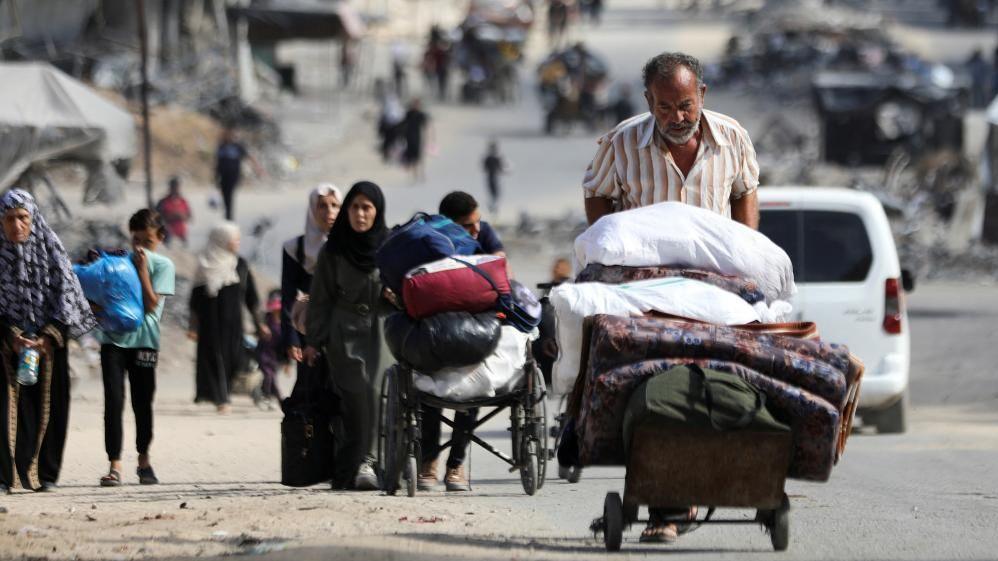Israel building new military dividing line across Gaza, satellite images suggest
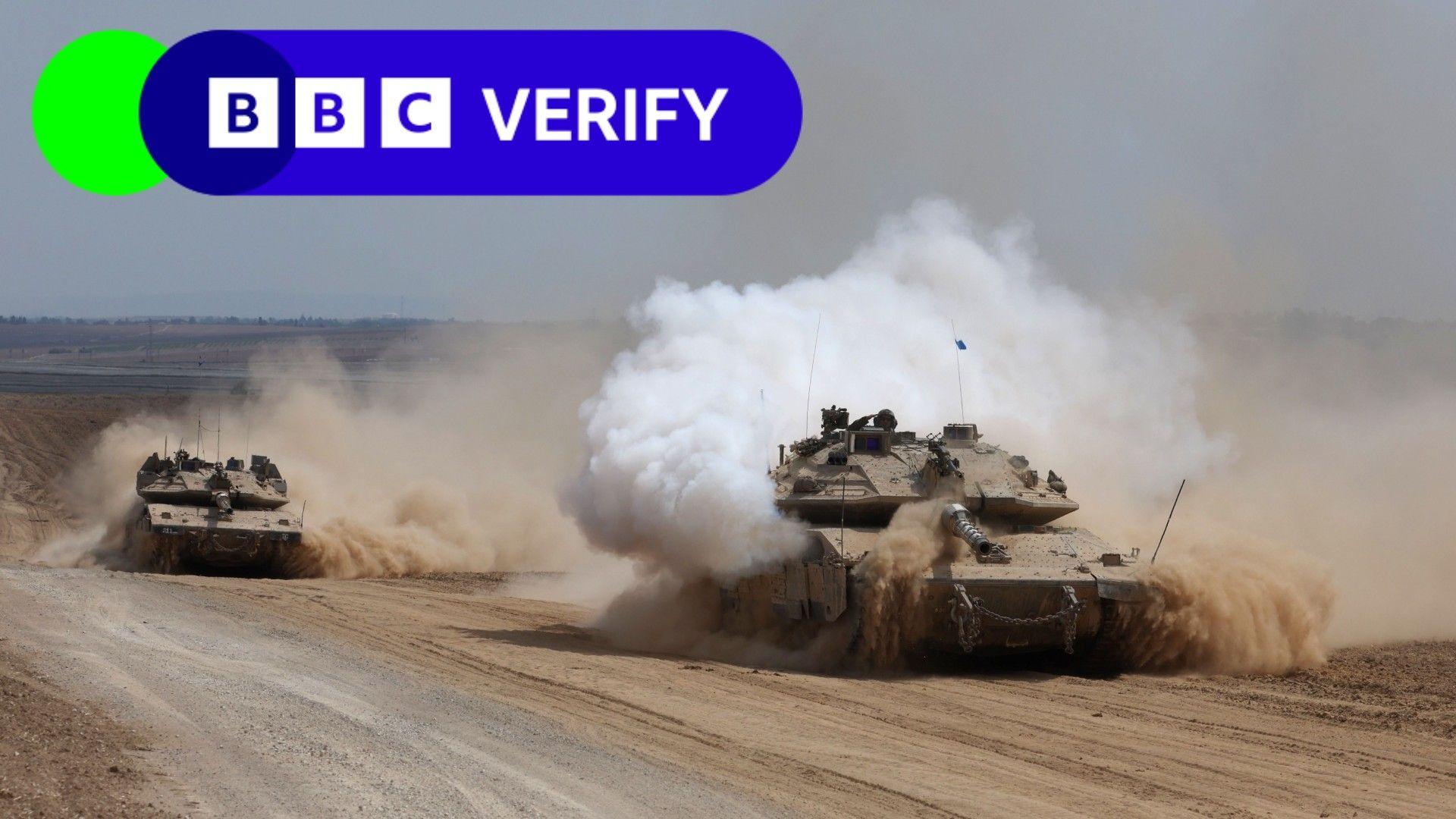
- Published
Israel is creating a new military dividing line in Gaza, separating off the far north of the strip, satellite images studied by BBC Verify appear to show.
Troops are in control of, and are clearing, an area across the width of north Gaza. Satellite images and videos show that hundreds of buildings have been demolished between the Mediterranean Sea and the Israel border, mostly through controlled explosions.
Images also show Israeli troops and vehicles have been stationed across the new divide. Analysts said the images suggest Gaza is being split into zones to make it easier to control.
An IDF spokesperson told the BBC it was "targeting terrorist operatives and infrastructure" in north Gaza.
Dr H A Hellyer, a Middle East security expert from the Rusi think tank, said the satellite images suggested Israel was preparing to block Palestinian civilians from returning to the north Gaza governorate. More than 100,000 people have already been displaced from the far north of Gaza, according to the UN.
Images appear to show two long sections of road on either end of the strip being connected by cleared land through an urban area. Buildings are being demolished between the two sections of road, with a clear pattern visible since early October.
This partition stretches about 5.6 miles (9km) across Gaza, from east to west, dividing Gaza City and the towns of Jabalia, Beit Hanoun and Beit Lahia in north Gaza.
The BBC has been told that there is a tactical route between Jabalia and Gaza City, which is part of operational activities targeting Hamas in Jabalia.
Videos filmed by the IDF and posted online show several multi-storey buildings being destroyed in controlled explosions since the beginning of October.
The graphic below shows examples geolocated by BBC Verify along the new corridor.
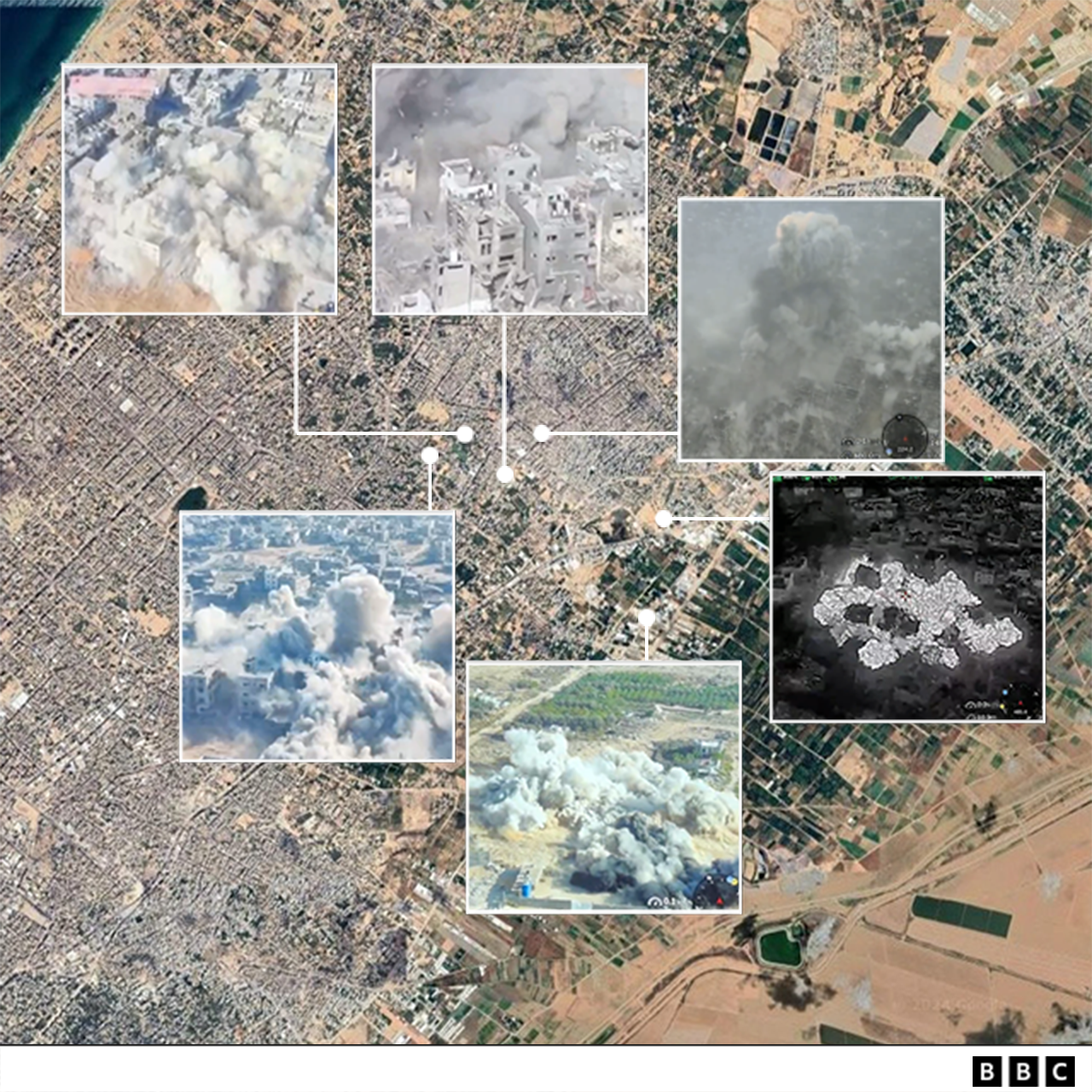
The BBC has geolocated blasts to areas in the new corridor
An IDF spokesperson told the BBC that it had no intention of destroying civilian infrastructure "without operational necessity" to neutralise Hamas.
Other footage shows IDF Humvee vehicles being driven through the cleared area from the direction of Israel. Humvees are not as heavily armoured as other military vehicles - and Dr Hellyer told the BBC that they were unlikely to be used unless the military was confident about their safety, indicating that Israeli troops are in control of the area.
Some analysts believe the IDF’s presence could indicate a permanent military partition – giving it control of who can travel between the Gaza and the North Gaza governorates.
Dr Hellyer said of the IDF: “They’re digging in for the long term. I would absolutely expect the north partition to develop exactly like the Netzarim Corridor.”
The BBC has previously documented how two partitions have been constructed in Gaza since the start of the current war. The Netzarim Corridor splits an area south of Gaza City, while the Philadelphi Corridor gives the IDF control of land running the length of Gaza’s border with Egypt.
BBC analysis of this new partition in the north shows a similar pattern to the construction of the previous corridors over the past year, with existing and newly built roads being connected and military positions emerging at regular intervals. Buildings and agricultural land are cleared so roads can be paved and military infrastructure built.
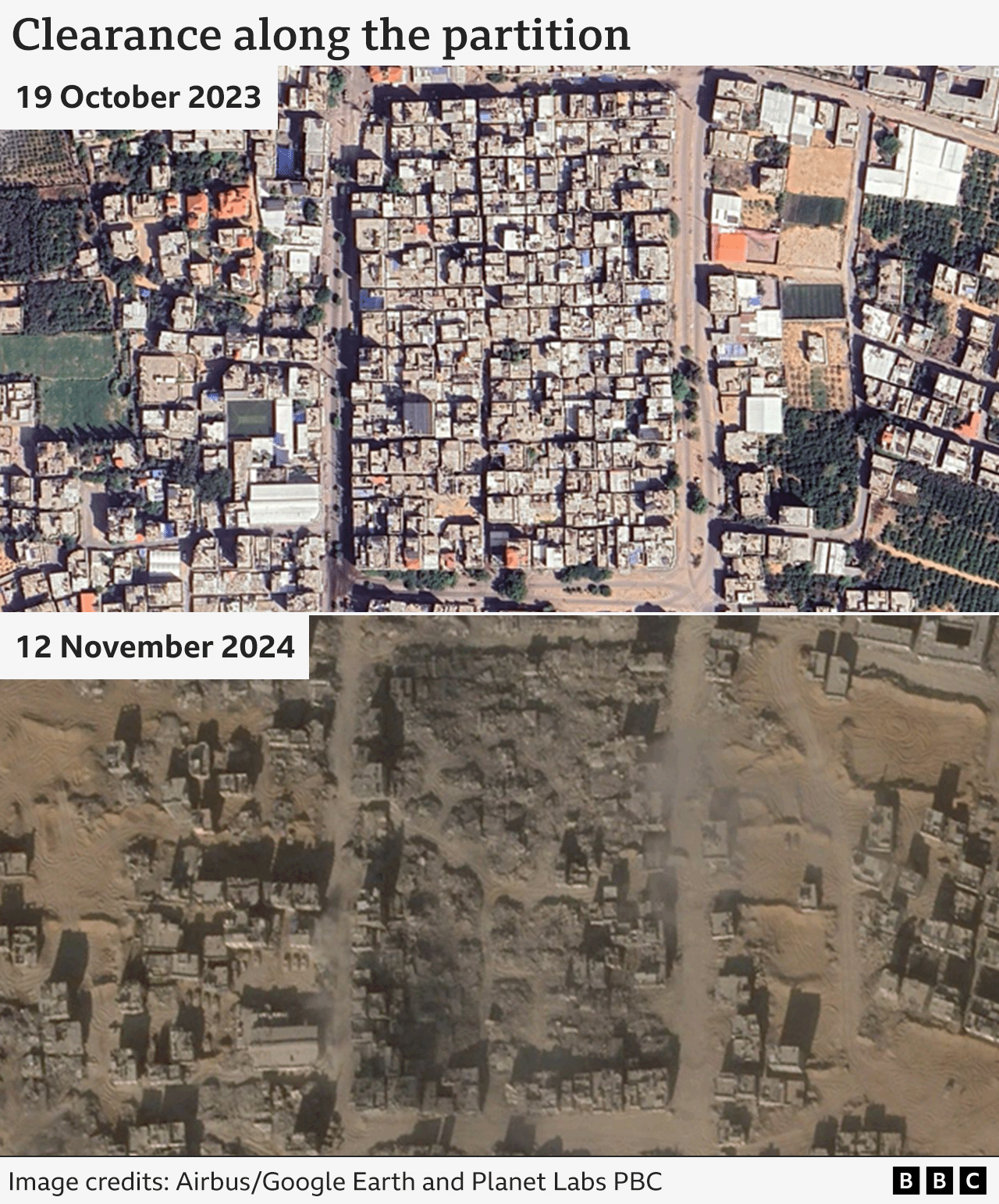
Satellite images show the destruction of buildings in the new military divide
Dr Eado Hecht from the Begin–Sadat Center for Strategic Studies (Besa), an Israeli think tank specialising in national security and foreign policy, agreed that the data showed a new dividing line, but questioned whether it was designed to be permanent.
“There is a new partition corridor separating Gaza City and the northern towns of the Gaza Strip. The goal is to cut off the Hamas - and other organizations' - forces that have returned to that area from support and the ability to retreat, so they can be dealt with more effectively.”
Israel has denied that it is implementing the "General’s Plan". Under the strategy, devised by former general Giora EIland, civilians would be told to leave the north, supplies would be blocked and the area would become a military zone. Those who remained would be treated as combatants and faced with the choice of “surrender or starve", with the aim of putting pressure on Hamas to release its hostages.
In a statement to the BBC, an IDF spokesperson said: "The IDF operates according to well-established military plans, and the claim that the IDF is implementing this specific plan is incorrect."
But concerns have mounted over the safety of the thousands of Palestinian civilians who remain in besieged towns in north Gaza.
The UN and aid charities have raised significant concerns about the situation in the north of Gaza. While thousands of people have been displaced, the UN says over 65,000 people could remain in the area.
The UN also said that "virtually no aid" has entered parts of the North Gaza governorate in 40 days on 20 November. A spokesperson on 26 November said that Palestinians were facing “facing critical shortages of supplies and services, as well as severe overcrowding and poor hygiene conditions” due to the blockade.
Earlier this month, a UN-backed assessment said there was a strong likelihood that famine was imminent in the besieged areas of northern Gaza.
BBC analysis shows around 90% of north Gaza has been subject to evacuation orders since the start of October. Videos posted on social media document people being moved south of the new partition. It is not clear if and when they will be able to return, but Israel’s foreign minister has insisted civilians will be allowed to return after the war.
Satellite images show the displacement of people in north Gaza. Large groups of tents, erected as temporary shelter, disappear. In the area left behind, there are often destroyed buildings and other examples of military activity.
While the IDF appears to have established enough control in the area to travel in lightly armoured vehicles, heavy fighting has also persisted in the area between IDF troops and Hamas fighters.
Videos posted by Hamas fighters show clashes with IDF tanks in the area around the dividing line.
Experts disagree over how long the new partition might be intended to remain in place. Dr Hellyer suggested that it could form the basis of plan to expel Palestinians from the area permanently.
"Personally I think they're going to settle Jewish settlers in the north, probably in the next 18 months," he said. "They won't call them settlements. To begin with they'll call them outposts or whatever, but that's what they'll be and they'll grow from there."
Israel's far-right Finance Minister Bezalel Smotrich has said that troops should occupy Gaza and "encourage" about half of Palestinian civilians to leave the territory within two years.
But the Israeli government denies that it plans to build settlements in Gaza once the war ends, and Dr Hecht dismissed such suggestions as nothing more than a "dream" for some ultranationalist ministers.
"All three corridors (Philadelphi in the south, Netzarim just south of Gaza City and the new one just north of Gaza City) are for control purposes," Dr Hecht said.
"The duration of their existence depends on when the war ends and in what manner it ends.”

Related topics
- Published10 March 2024
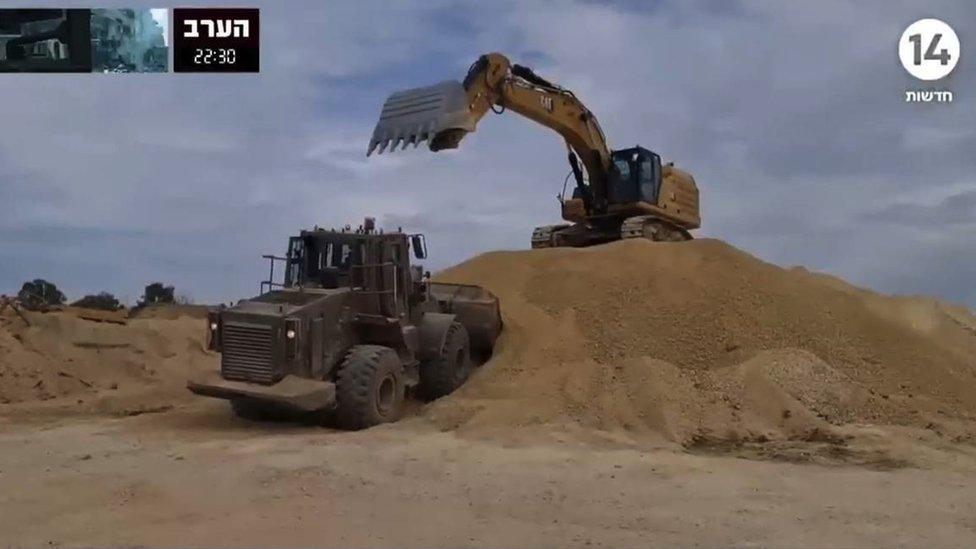
- Published7 September 2024
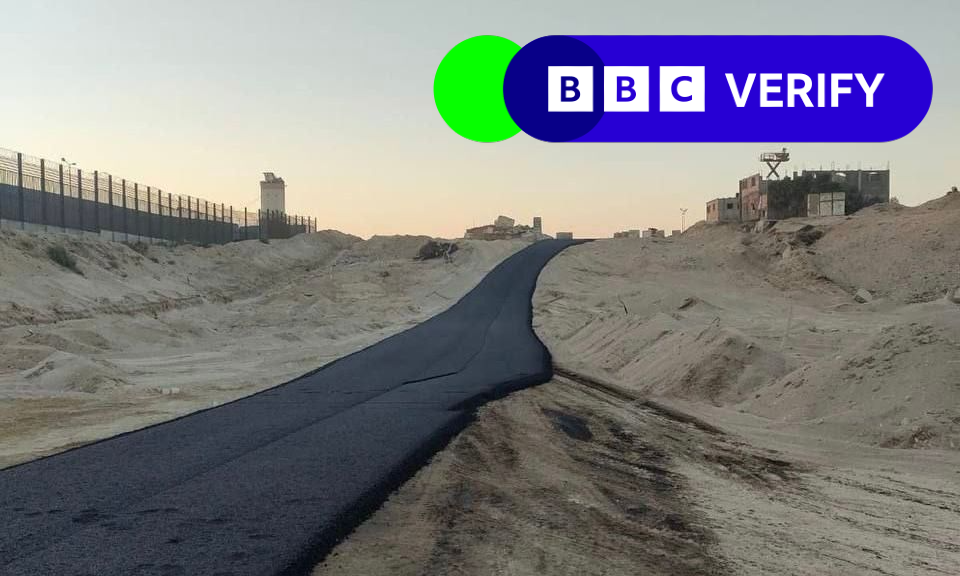
- Published12 October 2024
